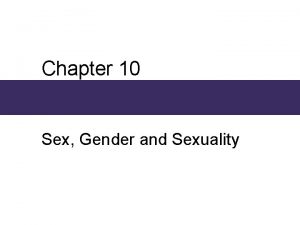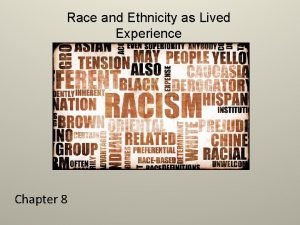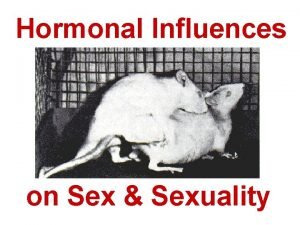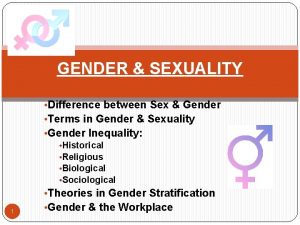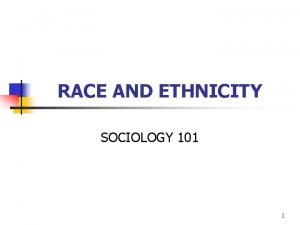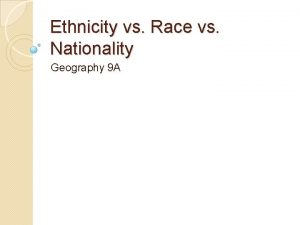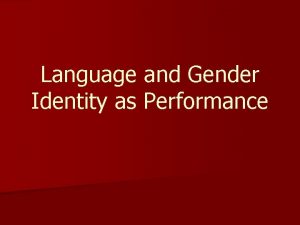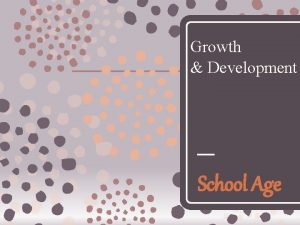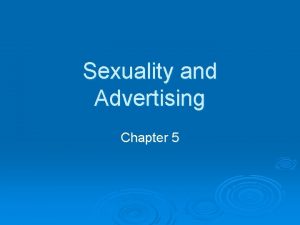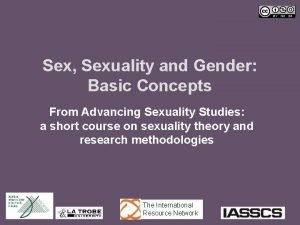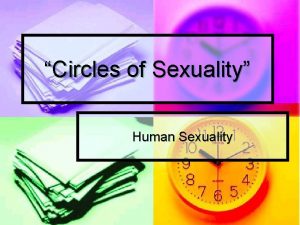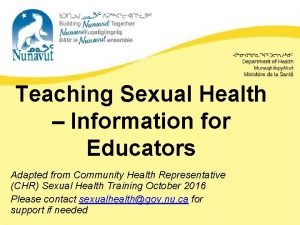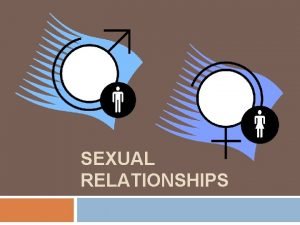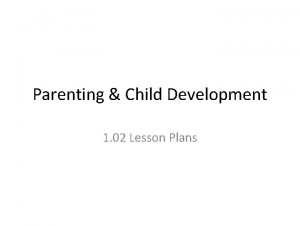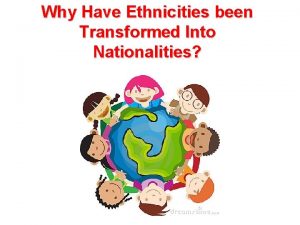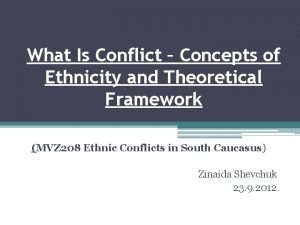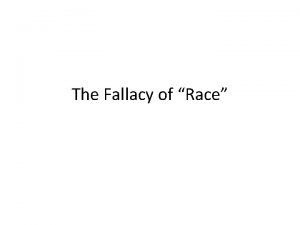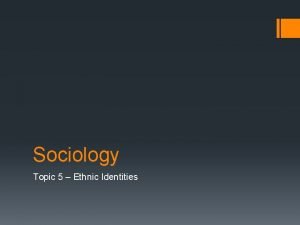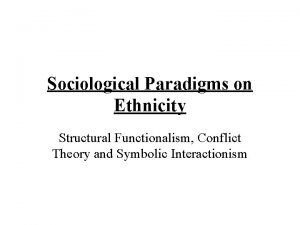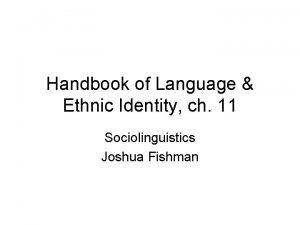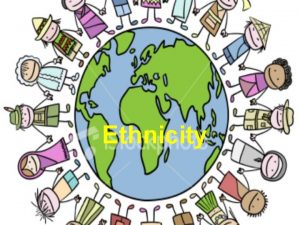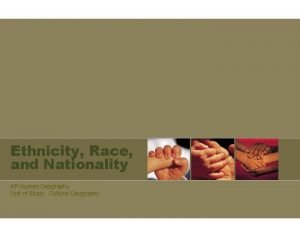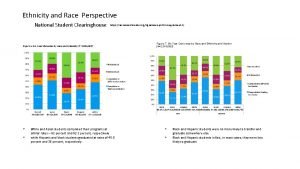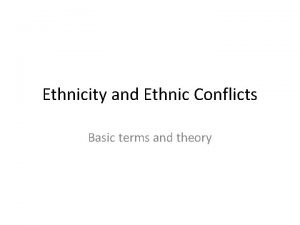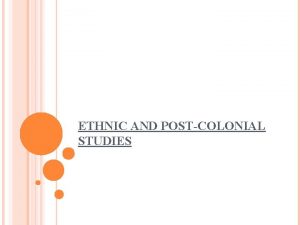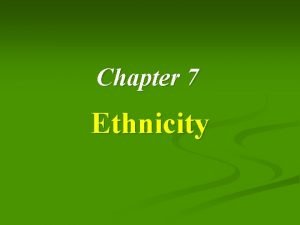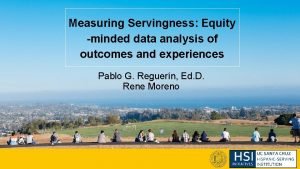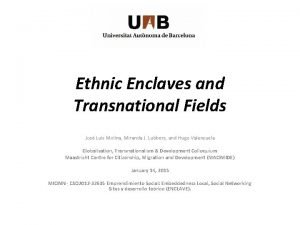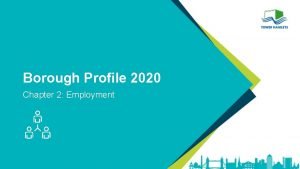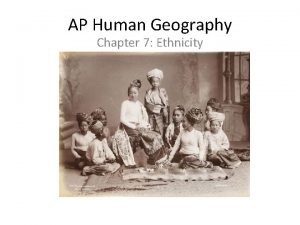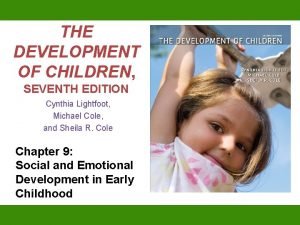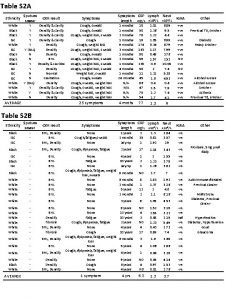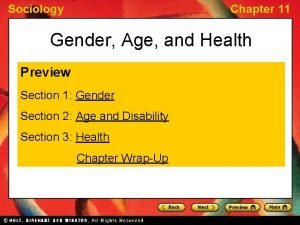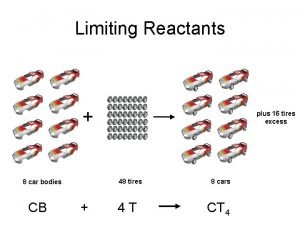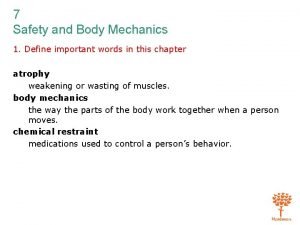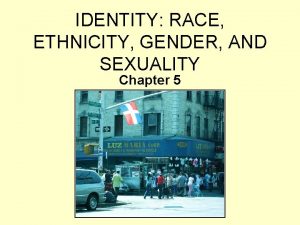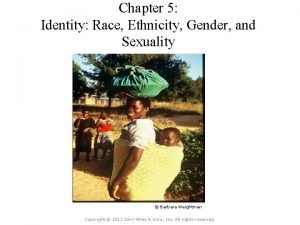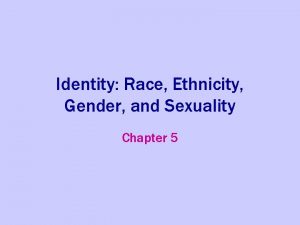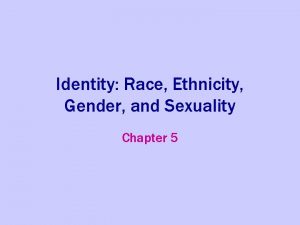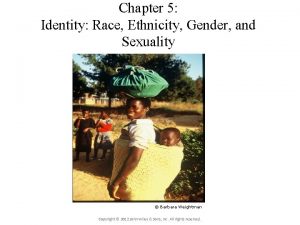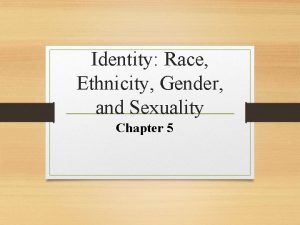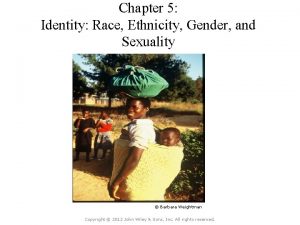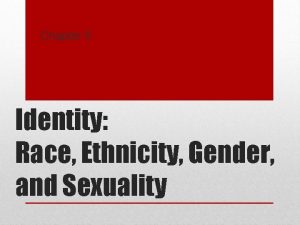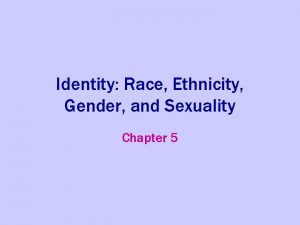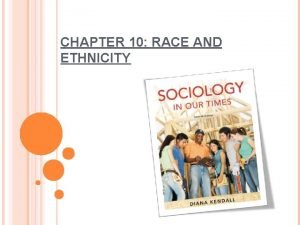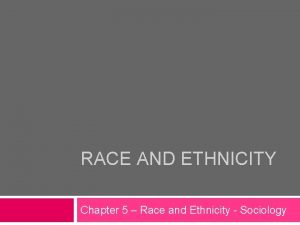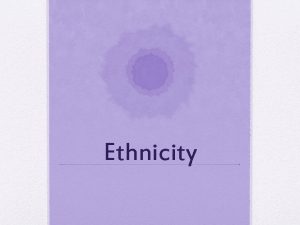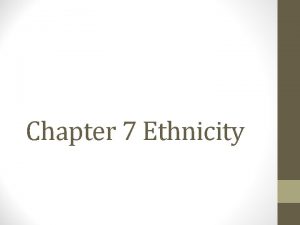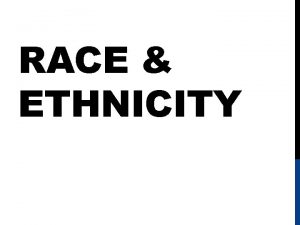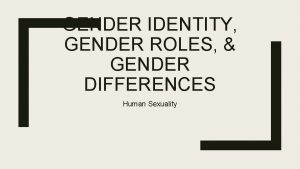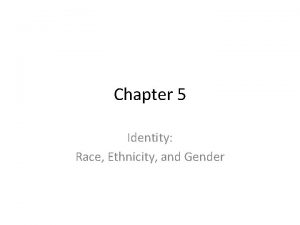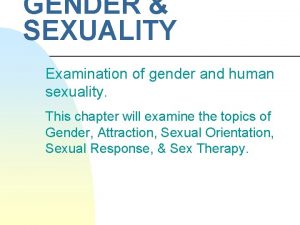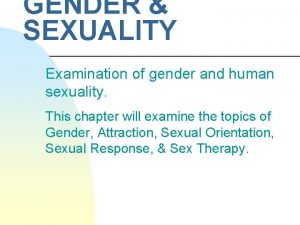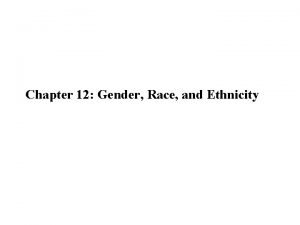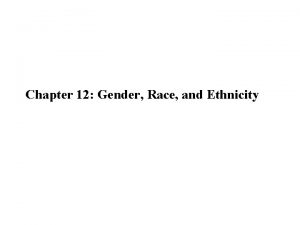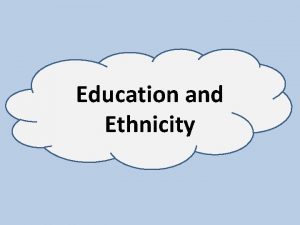Identity Race Ethnicity Gender and Sexuality Chapter 5

























































- Slides: 57

Identity: Race, Ethnicity, Gender, and Sexuality Chapter 5

Key Question: What is Identity and How are Identities Constructed?

Identity • Identity – “how we make sense of ourselves” – Gillian Rose • How do we establish identities? We construct our own identities through experiences, emotions, connections, and rejections - An identity is a snapshot of who we are at a point in time - Identities are fluid, constantly changing, shifting, becoming. - we work through derivations and declinations to find an identity that matches ourselves - an identity is a snapshot or an image of who we are at the moment - Identities vary across scales, and affect each other across scales.

- - Identities are also constructed by identifying against (defining the other and then defining ourselves as “not that. ”) To identify against, we first define the “other” and then ourselves as “not the other” The state is one of the most powerful foci of identity in the modern world State nationalism is a powerful force Language and religion can function as foci of identity also Race, gender, ethnicity, and sexuality are important axes of identity. 4

Gender – “a culture’s assumptions about the differences between men and women: their ‘characters, ’ the roles they play in society, what they represent. ” - This is Domosh and Seager’s definition of gender -Divisions of labor are one of the clearest ways in which societies are gendered -Example: factory jobs in Indonesia go to women instead of men (factory managers in these areas see women as an expendable labor pool) -In many poor countries, families see young women as financial supporters of their families leading to the migration of these women. For example, in Indonesia, Malyasia, and the Philippines, many women temporarily migrate to the Middle East to work as domestics. -

-In Bali, brick-making is done by hand by boys and women. --Society creates stereotypical boxes that make people a certain way depending on their gender American society still has gendered divisions of labor -People think women aren’t capable of hard-working jobs - Society creates stereotypical boxes that make people a certain way depending on their gender 6

Race – a categorization of humans based on skin color and other physical characteristics like bone structure. Racial categories are social and political constructions because they are based on ideas that some biological differences are more important than others. Societies in different parts of the world have drawn distinctions among peoples based other physical characteristics. Countless times during our lives, we fill out many forms such as surveys and medical forms that ask us to “check” the box next to our “race” even though races are not supposed to be biologically based.

On Racism and Colonialism “Colonial racism was a major element in that conception of ‘Empire’ which attempted to weld dynastic legitimacy and national community. It did so by generalizing a principle of innate, inherited superiority on which its own domestic position was (however shakily) based on the vastness of overseas possessions, covertly (or not so covertly) conveying the idea that if, say, English lords were naturally superior to other Englishmen, no matter: these other Englishmen were no less superior to the subjected natives. ” - Benedict Anderson argues that differences in socioeconomic classes filed the concept of superiority attracted to race (racism). He notes that even before exploration and colonialism, the non wealthy in colonizing countries defined themselves as superior to the people in the colonies. The stories the commoners heard about the “mystical” and “savage” “others” fostered feelings of superiority. Skin color is one of the easiest ways to define one another.

Skin color is a matter of pigmentation, melanin a protective element against strong radiation from the sun. The same ultraviolet radiation intercepted by darkly pigmented skin also stimulates the body's production of vitamin D. Whatever may be said about the link between environment and the development of particular physical characteristics, it is important to recognize that skin color is not a reliable indicator of genetic closeness. (i. e. Indians, New Guineans, and Aborigines) In Britain, “black” refers to Africans, Afro. Carib, and Indians; Russia it describes “Caucasians” ; in many parts of Latin America, particularly Brazil, racial classification is really a class placement where blacks are the lowest class.

Race and Ethnicity in the US • Before 2000, the US Census classified “Hispanic” as a race but then categorized “Hispanic” as ethnicity to acknowledge people from Lat Am who did not speak Spanish. In the US, 64% of the Hispanic population is Mexican, 9% are Puerto Rican. Based on 2010 Census data projections, the population of “everyone else” will surpass the “White, non-Hispanic” population around 2042.

Racial Categories are typically imposed on people through: • Residential segregation: “degree to which two or more groups live separately from one another, in different parts of the urban environment. ” This physically sorts population groups into various neighborhood contexts. • • Racialized divisions of labor Racial categories defined by governments

Redlining the illegal practice of denying services, either directly or through selectively raising prices, to residents of certain areas based on the racial or ethnic makeups of those areas. While some of the most famous examples of redlining regard denying financial services such as banking or insurance, other services such as health care or even supermarkets, can be denied to residents to carry out redlining; redlining can also refer to refusing to make mortgage loans or issue insurance policies in specific areas for reasons other than economic qualifications of applicants 12

In 2000, the U. S. Census Bureau allowed Americans to categorize themselves as one race or more than one race. Authors of the U. S. Census Bureau found that overall residential segregation by race/ethnicity is on the decline.

Estimated Percentage of U. S. Population by Race and Ethnicity until 2050 In 2000, the U. S. Census Bureau calculated race and Hispanic origin separately, allowing people to place themselves in one or more race categories plus one of two Hispanic origin categories. According to the race categories provided in these Census estimates, starting in 2050, the “White non-Hispanic” population will no longer be the majority population in the United States.

Residential Segregation • The “degree to which two or more groups live separately from one another, in different parts of the urban environment. ” Massey and Denton • The five statistical measurements of segregation are: • Evenness, exposure, concentrated, centralized, and clustered

According to the Census Bureau, the most residentially segregated metropolitan area for African Americans is Milwaukee, Wisconsin

Lowest Rate of Residential Segregation for Hispanics/Latinos: Baltimore for Asians/Pacific Islanders: Baltimore, Maryland

The most segregated large metropolitan area for Asians in the U. S based on the 2010 census Buffalo/Niagra Falls, NY

Ethnocentrism • Tendency to evaluate other cultures against the standards of one’s own, implying superiority of one’s ethnic group. • Negative: In multiethnic societies provokes social discord and isolation. • Positive: When ethnic groups exist in relative isolation by providing familiarity through traditions, friends, business opportunities, and political identification.

Identities in Neighborhoods change over time: Invasion and Succession: new immigrants to a city often move to areas occupied by older immigrant groups.

Identities Across Scales • One way to view an individual’s various identities is to treat them as nested, one inside of the other; the appropriate identity is revealed at the appropriate scale. In this vein, each larger territorial extent of geographic space has its own corresponding set of identities. Today, more geographers see identities as fluid, intertwined, and context dependent rather than as neatly nested. Identities affect each other in and across scales, and the ways places and peoples interact across scales simultaneously affect identities within and across scales.

Succession • Process by which new immigrants to a city move to and dominate or take over areas or neighborhoods occupied by older immigrant groups. For example, in New York, Puerto Ricans moved into the Jewish neighborhood of East Harlem and assumed a dominant presence in the neighborhood. • Ethnic Enclaves • Relatively small area occupied by a distinct culture or ethnicity, which largely results from chain migration. “Little Italy” or “Chinatown” are common names of ethnic enclaves that exist in numerous American cities.

Ethnic Islands & Ethnic Provinces • EI---Small, rural areas settled by a single ethnic group as opposed to ethnic neighborhoods or enclaves, which are urban. Leave their imprint in rural areas through housing, barn style, and farmstead layouts. (e. g. Scandinavians in north, central states; Germans in Appalachians, upper Midwest, Texas) • EP---When entire regions become associated with ethnic or racial aggregations. (e. g. French Canadians in Quebec; Afr. Am. in southeast; Nat. Am. in Ok; Hispanics in sw)

Recall the last time you were asked to check a box for your “race. ” Does that box factor into how you make sense of yourself, locally, regionally, nationally, and globally?

Key Questions: How do places affect identity, and how can we see identities in places? Identity is a complex and dynamic concept. Discuss ways in which identities are constructed. Highlight issues such as multiple identities, identifying against and the impact of scale in your discussion.

Sense of Place • We infuse places with meaning and feeling, with memories and emotions. The uniqueness of a place can become a part of who we are. • Our sense of place becomes part of our identity and our identity affects the ways we define and experience place.

Ethnicity • Ethnicity – a constructed identity that is tied to a place … it is often considered “natural” because it implies ancient relations among people over time. - Ethnic identity is greatly affected by scale and place. -Cultural groups invoke ethnicity when race cannot explain differences and antagonism between groups.

How do different places (eg. Switzerland vs. New Glarus, Wisconsin) create different identities (Swiss vs. Swiss American)?

Cultural groups often invoke ethnicity when race cannot explain differences and antagonism between groups. Just as “racial conflicts” are rooted in perceptions of distinctiveness based on differences in economics, power, language, religion, lifestyle, or historical experience, so too are “ethnic conflicts. ” • A conflict is often called ethnic when a racial distinction cannot easily be made. For example, using physical appearance and skin color, an observer cannot distinguish the ethnic groups in many of the conflicts around the world. In some instances, the term ethnicity is reserved for a small, cohesive culturally linked group of people who stand apart from the surrounding culture. Like other aspects of culture, ethnicity is a dynamic phenomenon that must be understood in terms of the geographic context and scales in which it is situated.

How does a place change when the people who live there change? Today, Mexicali’s Chinatown has few Chinese Residents, but continues to be an important place for the region’s Chinese population. In 1925, Mexicali's Chinatown consisted of diverse businesses spread across many blocks. We think of the border region between the United States and Mexico as being an Anglo-Hispanic meeting point, but one of the largest groups of Chinese in Mexico can be found just outside the city of Mexicali. They established a thriving Chinatown in the heart of Mexicali that served as the uncontested center of Chinese life in the region for decades.

Mexicali’s Chinatown is experiencing a transformation, as Chinese residents have dispersed to the edges of the city and beyond. • Relatively few Chinese continue to live in Mexicali Chinatown yet the ethnic neighborhood still plays an important symbolic and functional role for individuals of Chinese ancestry in the area, who are still shaping the region’s social and economic geography. Even in regions where an ethnic population is small in number, if they have a group identity and consciousness they can have a lasting effect on the cultural landscape.

Identity and Space • Space – “social relations stretched out” • Place – “particular articulations of those social relations as they have come together, over time, in that particular location. ” • When people make places, they do so in the context of surrounding social relationships. • Queer theory- “highlights the opposition to the heteronormative and focuses on “queers” with the heteronormative. ” Many geographers, such as Elder, Knopp, and Nast, refer to theories that explain or inform our understanding of sexuality and space as queer theory.

• The highest concentrations of same-sex households in New York City are located in Manhattan and Queens.

Regional Variation • Appearance of humans in clustered populations probably results from the development of populations on different continents.

How Does Geography Reflect and Shape Power Relationships Among Groups of People? • Power relationships- assumptions and structures about who is in control and who has power over others • Power relationships can subdue people’s ideas and thoughts, giving society the opportunity to control how people should act or where certain people are welcomed and unwelcomed. For example, groups in Northern Ireland gangs in major U. S. cities create “exclusive” areas by graffiti demarcating territories.

Power Relationships • They affect identities directly, and the nature of those effects depends on the geographical context in which they are situated. • Rules and regulations set by the government can affect power relationships; can subjugate entire groups, enabling society to enforce ideas about the ways people should behave or where people should be welcomed or turned away---thus altering the distribution of peoples. • Even without government support, people create places where they limit the access of other peoples.

Power Relationships • In Belfast, Ireland certain religious groups such as Protestants and Catholics, paint murals or graffiti on buildings to define certain neighborhood and exclude the others • In the U. S. people create spaces themselves because local governments do not enforce laws defining certain spaces as belonging to members of a certain gang

Just Who Counts? • When the Constitution was ratified, many power relationships formed. • For example, the US Constitution counted a black person as threefifths of a white person for purposes of taxation and representation. • The government also did not recognize the right of all American Indians to vote. • In Dred Scott v. Sandford (1857) the U. S. Supreme Court held that African Americans, whether enslaved or free, could not be American citizens and therefore had no standing to sue in federal court and that the federal government had no power to regulate slavery in the federal territories acquired after the creation of the United States. • The Emancipation Proclamation, a presidential proclamation and executive order issued by President Lincoln on January 1, 1863. In a single stroke, it changed the federal legal status of more than 3 million enslaved persons in the designated areas of the South from "slave" to "free. "

Just Who Counts? Reconstruction Amendments • The 13 th Amendment to the US Constitution was adopted in 1865, abolished slavery and involuntary servitude, except as punishment for a crime. • The 14 th Amendment was adopted on July 9, 1868, as one of the Reconstruction Amendments. The amendment grants citizenship rights, due process, and equal protection of the laws to the freedmen. • The 15 th Amendment prohibits the federal and state governments from denying a citizen the right to vote based on that citizen's "race, color, or previous condition of servitude. " It was ratified on February 3, 1870, as the third and last of the Reconstruction Amendments.

Just Who Counts? • At one point Jim Crow laws set by the government, separated everything into “black” spaces and “white” spaces. • Similarly, in South Africa apartheid, a word meaning "the state of being apart" (literally "apart-hood") was a system of racial segregation enforced through legislation by the National Party (NP), the governing party from 1948 to 1994. Under apartheid, the rights, associations, and movements of the majority black inhabitants and other ethnic groups were curtailed and Afrikaner minority rule was maintained. • The government separated American Indians into those who were “civilized” enough to be citizens and those who were not, until 1924 when it recognized the citizenship of all Am Indians born in the US • In 1920 enough states ratified the 19 th Amendment, which granted the right to vote to all Americans regardless of sex. • In the Sub-Saharan realm, male dominance remains the rule rather than the exception.

Just Who Counts? • Sharecropping is a system of agriculture in which a landowner allows a tenant to use the land in return for a share of the crops produced on their portion of land. • A tenant farmer is one who resides on land owned by a landlord. Tenant farming is an agricultural production system in which landowners contribute their land often a measure of operating capital and management; while tenant farmers contribute their labor along with, at times, varying amounts of capital and management. Depending on the contract, tenants can make payments to the owner either of a fixed portion of the product, in cash or in a combination. The rights the tenant has over the land, the form, and measure of the payment varies across systems (geographically and chronologically). • The crop-lien system was a credit system that became widely used by cotton farmers in the United States in the South from the 1860 s to the 1930 s. Sharecroppers and tenant farmers who did not own the land they worked obtained supplies and food on credit from local merchants. They held a lien on the cotton crop and the merchants and landowners were the first ones paid from its sale. What was left over went to the farmer. The system ended in the 1940 s as prosperity returned and many poor farmers moved permanently to cities and towns, where jobs were plentiful because of the war. • Convict leasing was a system of penal labor practiced in the Southern United States. Convict leasing provided prisoner labor to private parties, such as plantation owners and corporations such as the Tennessee Coal and Iron Company. It was a form of bondage distinctly different from that of the antebellum South in that for most men, and the relatively few women drawn in, this slavery did not last a lifetime and did not automatically extend from one generation to the next. But it was nonetheless slavery – a system in which armies of free men, guilty of no crimes and entitled by law to freedom, were compelled to labour without compensation, were repeatedly bought and sold, and were forced to do the bidding of white masters through the regular application of extraordinary physical coercion

Just Who Counts? • Plessy v. Ferguson, (1896), landmark US Supreme Court decision upholding the constitutionality of state laws requiring racial segregation in public facilities under the doctrine of "separate but equal". • Brown v. Board of Education of Topeka, landmark United States Supreme Court case, declared state laws establishing separate public schools for black and white students unconstitutional. Decision overturned the Plessy case. Handed down on May 17, 1954, the Warren Court's unanimous (9– 0) decision stated that "separate educational facilities are inherently unequal. " • The Civil Rights Act of 1964, landmark piece of civil rights legislation in the US that outlawed discrimination based on race, color, religion, sex, or national origin; effectively ended Jim Crow, guaranteed all citizens equal protection of the laws under the 14 th Amendment and its duty to protect voting rights under the 15 th Amendment. • The Voting Rights Act of 1965, landmark piece of federal legislation in the US that prohibits racial discrimination in voting; effectively ended literacy tests, poll tax, and grandfather clause as requirements to vote.

Women • Throughout the world, women’s work is usually unaccounted for and undervalued. • The assumptions are that household work is reserved for women and that this work is not productive in the state’s economy. • For example, parts of South Africa and Zimbabwe have become demographically feminized due to migration of males to urban and mining jobs.

Women • Gross National Income (GNI)- the monetary worth of what is produced within a country plus income received from investments outside the country. • The GNI does not include the work done by rural women in less wealthy countries or the unpaid labor of women in the household. • In less wealthy countries, women produce more than half of all the food and many other things that are not recorded for as being economically productive.

Women • Women get paid less and have less access to education and food, even though more women are in the official labor force than ever before. • Ann Oberhauser explained how people in the West tend to think that women in poorer countries work in textile and jewelry-making fields because the women are “more docile, submissive, and tradition bound” than women in wealthier places in the world.

Vulnerable Populations • Power relations can have a vital impact on which populations or areas are vulnerable to death, injury, disease, or famine. • Geographers use spatial analysis and mapping to explain what people or populations will be most affected by natural hazards. • The study of vulnerability is influenced by social and environmental circumstances; requires thinking geographically because not all people and places are affected in the same way by social, political, economic, or environmental change.

Vulnerable Populations • For example, geographer Sarah Halvorson examined the vulnerability of children to diarrheal diseases in Pakistan by accounting for the “constructions of gender, household policies, and gendered relationships that perpetuate inherent inequalities and differences between men and women and between social groups. ” • Halvorson inferred that housing, income (tangible resources) and social status and position within the family structure (intangible resources) all influenced the vulnerability.

HIV/AIDS • Geographer Joseph Oppong recognized that spatial analysis of a disease can reveal what populations are most vulnerable in a country. • Oppong states that in the majority of Subsaharan Africa, HIV/AIDS rates are highest for women in the urban areas who are sex workers. • Although in the urban area of Accra, Ghana, HIV/AIDS rates were lower for women • Oppong infers that Accra’s rates are lower because women have more access to health care than women in rural areas

Women in Subsaharan Africa • populate much of the rural areas, as men migrate to cities for work. • produce 70% of the region’s food. • only a small percentage of women have legal title to their land. • Traditional banks do not lend money to rural women • Land titles are usually not awarded to women • Young women do not get awarded with education because of fees and male supremacy throughout the families. • To stimulate tea production, the government of Kenya gave bonuses to men who owned title to the land.

Gender differences in roles at Home • Everywhere women do most of the cooking and cleaning and child care (for no pay) • Since the men usually run off to the towns or cities to look for work, the mothers of the household are left alone, having to support themselves and the children. • Gender roles are becoming less distinct in the developed countries. • Often for women, this is in addition to the paying jobs… Thus women spend most of their time working to men • Sometimes the men that leave and marry new wives and start a different family.

• Women Government Representation Since the 1990’s women have been fighting for more political representation in southern/eastern Africa. • Uganda set up a guarantee that women must hold at least 20% of the legislative seats. • The South African government established universal suffrage through their constitution in 1997. • The African National Congress (ANC) reserved a percentage of their seats for women • After a civil war in Rwanda, women became the majority of country’s population. • Rwanda’s constitution ensures at least 30% women in all government decision-making bodies; first country where women hold more than 50% of legislative seats. . • Women are beginning to revolutionize the governments in their countries in sub Saharan Africa.

Gender and Power • Women have adequate legal right throughout most of the core. . . Not so in the periphery • In the developing countries, women lack • Access to school (no feeling of empowerment) • Legal rights • Political power • Wealth… access to loans • Land ownership rights • Today, women account for the 55% of the voting-age population making a big impact in politics.

Dowry Deaths in India - beatings or murders of brides (often by burning) when a dispute arises over a dowry or when a dowry contract is broken. Difficult to “legislate away” the power relationships that lead to dowry deaths; in 2001, 7, 000 women were victims female infanticide is also tied to the disempowerment of women - India has set up legal aid offices to assist women who fear Dowry Death; 1 in 1000 marriages end in a divorce in India.

Shifting Power Relations among Ethnic Groups • Areas with multiple ethnicities often experience an ebb and flow of acceptance over time. If the economy is stable, the residents are more accepting of each other. • If the economy is not booming, the residents and some politicians tend to blame the immigrants. For example, when the downturn of the US economy in the 1870 s fed nativism leading to the Chinese Exclusion Act in 1882. • The city of Oakland in Alameda County, CA segregated Chinese residents during the 1910 s even as the economy grew. In the 1910 s, segregation of the Chinese in Oakland, California was the result of “white only” zoning laws. • During WWII, attention turned to Japanese segregation/internment. • Asian population doubled in 1980 s but continued to experience segregation, living in same regions as Afr-Am and Hispanics with high rate of poverty.

Model Minority Myth • “Model Minority”- (Asians in California) Asians are considered good, hardworking people who, despite their suffering through discrimination, harassment, and exclusion, have found ways to prosper through peaceful means. This is a stereotype as data shows these people experience different levels of economic success. • Most success of Asian peoples: most success going to first wave of migrants and lower paying jobs to newer migrants.

Power Relations in Los Angeles • Over the last 4 decades, the greatest migration flow into CA and SW US has come from Lat Am and Carib, esp Mex. Hispanic pop in LA grew from 39% in 1990 to 48% in 2010. • SE LA is home to highest concentration of Latinos; region shifted from working-class white neighborhood, home to many large corporations in 1970 s to Hispanic region as corps closed and whites fled. Companies returning today as cheap labor supply now dominates region; jump from 4% Hispanic in 1960 to over 90% in 1990 (barrioization) changed cultural landscape dramatically. • Rodney King riots of Apr 1992 not just localized reactions to police brutality but reflected sweeping economic, political, and ethnic changes in South Central LA and beyond. The region in 1970 was 90% black. Now it is split almost evenly between black and Hispanic; accompanied by a steady influx of Korea residents and small-business owners.

Geographers who study race, ethnicity, gender, or sexuality are interested in the power relationships embedded in a place from which assumptions about “others” are formed or reinforced. Consider your own place, your campus, or locality. What power relationships are embedded in this place?
 Chapter 10 sex gender and sexuality
Chapter 10 sex gender and sexuality Chapter 8: race and ethnicity as lived experience
Chapter 8: race and ethnicity as lived experience Androgen insensitivity
Androgen insensitivity Umbrella term
Umbrella term What is cultural assimilation
What is cultural assimilation Race vs ethnicity vs nationality
Race vs ethnicity vs nationality Velocity triangle of pelton turbine
Velocity triangle of pelton turbine A solid barrier constructed at a suitable location
A solid barrier constructed at a suitable location Strategic gender needs and practical gender needs
Strategic gender needs and practical gender needs Data race vs race condition
Data race vs race condition Gender roles theory
Gender roles theory Sexual orientation gender identity
Sexual orientation gender identity Gender identity
Gender identity Gender identity tagalog
Gender identity tagalog Pretest growth development and sexuality
Pretest growth development and sexuality Sexuality in advertising
Sexuality in advertising What are the 4 strands of sexuality
What are the 4 strands of sexuality Circles of sexuality
Circles of sexuality Definition of sexuality
Definition of sexuality Types of sexual relationships
Types of sexual relationships Which illustrates an emotional aspect of teen sexuality?
Which illustrates an emotional aspect of teen sexuality? Peer sexuality support programme
Peer sexuality support programme Base of uterus
Base of uterus Sexuality spectrum
Sexuality spectrum A.backtoschool
A.backtoschool Stateless nation
Stateless nation Concept of conflict
Concept of conflict Troian bellisario ethnicity
Troian bellisario ethnicity What is ethnicity
What is ethnicity Symbolic interactionism vs functionalism
Symbolic interactionism vs functionalism Symbolic ethnicity
Symbolic ethnicity Ethnicity in sociolinguistics
Ethnicity in sociolinguistics Lactose intolerance countries
Lactose intolerance countries Elements of nationalism include all but
Elements of nationalism include all but Ethnicity examples
Ethnicity examples What is ethnicity
What is ethnicity Ethnic studies and postcolonial criticism
Ethnic studies and postcolonial criticism Whats ethnicity mean
Whats ethnicity mean Arvo krikmann
Arvo krikmann Bad blood intertextuality
Bad blood intertextuality Porter novelli healthstyles survey
Porter novelli healthstyles survey Blood type inheritence
Blood type inheritence Bitwit ethnicity
Bitwit ethnicity Is hispanic an ethnicity
Is hispanic an ethnicity Is hispanic an ethnicity
Is hispanic an ethnicity Luis molina ethnicity
Luis molina ethnicity Tower hamlets ethnicity
Tower hamlets ethnicity Blockbusting ap human geography definition
Blockbusting ap human geography definition Johnny cash first wife ethnicity
Johnny cash first wife ethnicity Anteverted nares
Anteverted nares The development of children 7th edition
The development of children 7th edition Isc ethnicity
Isc ethnicity Chapter 11 gender age and health review worksheet answers
Chapter 11 gender age and health review worksheet answers My aurora health care
My aurora health care Limiting and excess reactants race car answers
Limiting and excess reactants race car answers Pass and race acronyms
Pass and race acronyms إسحاق ستيرن
إسحاق ستيرن Judenrat def
Judenrat def
